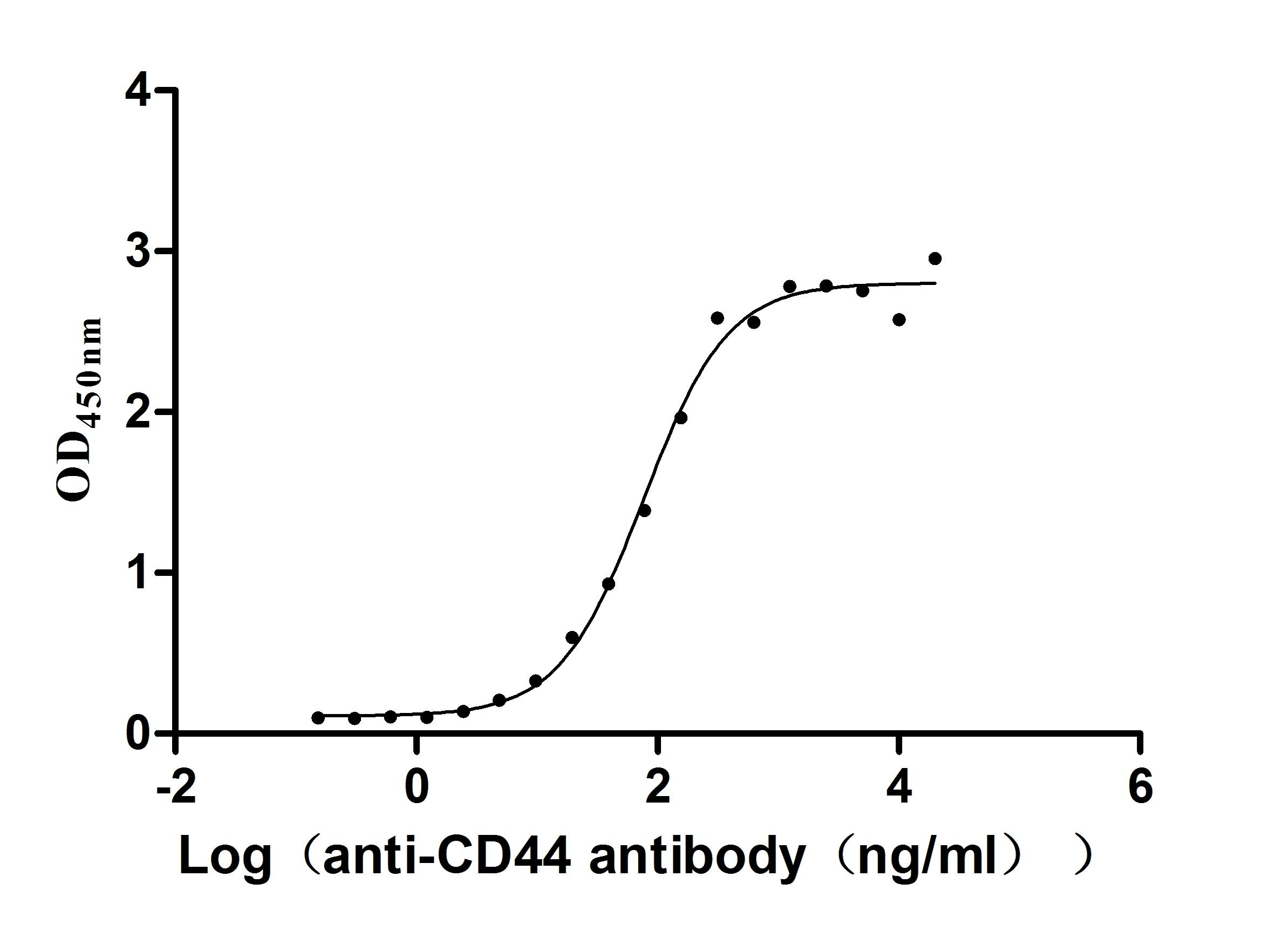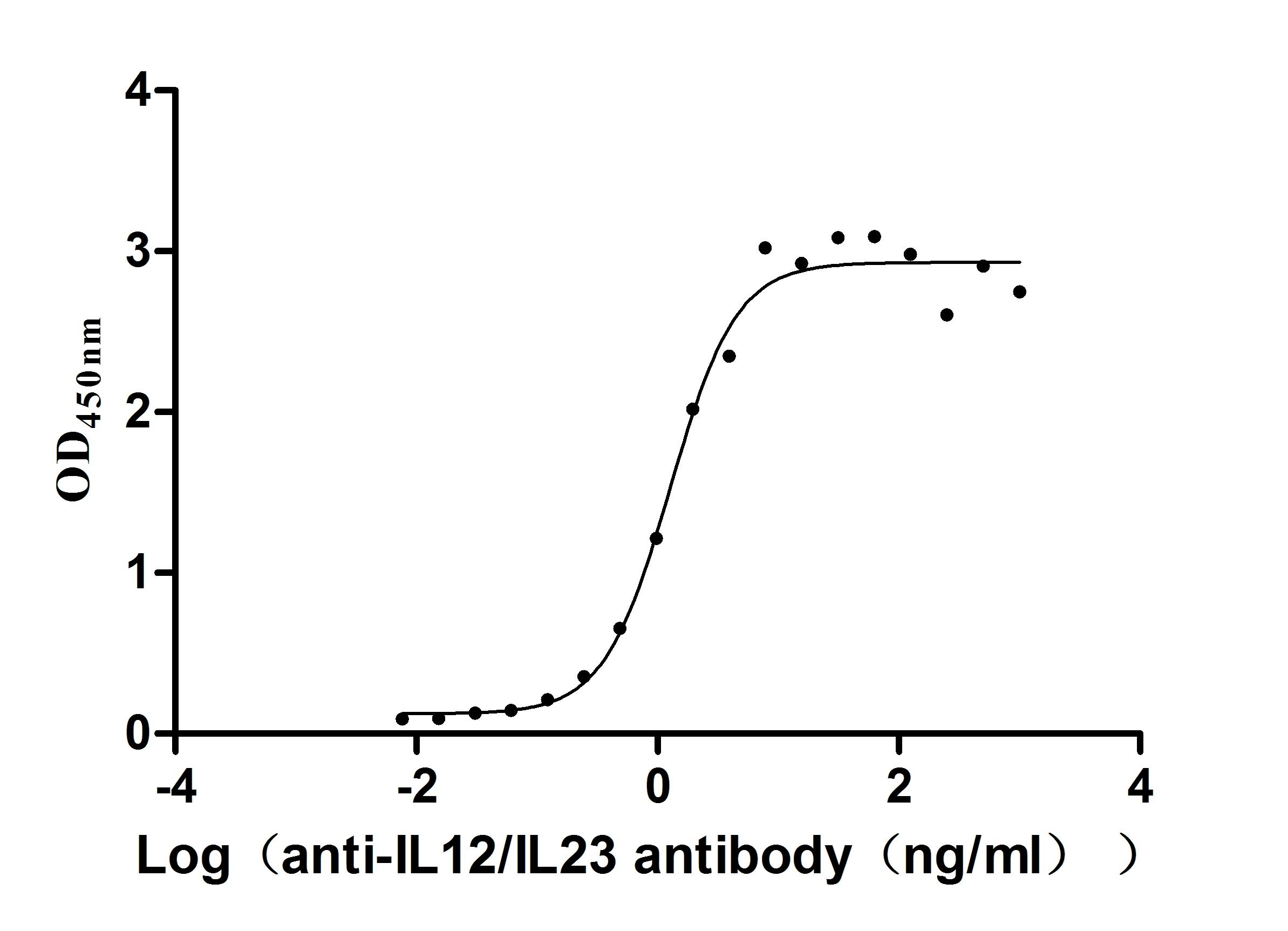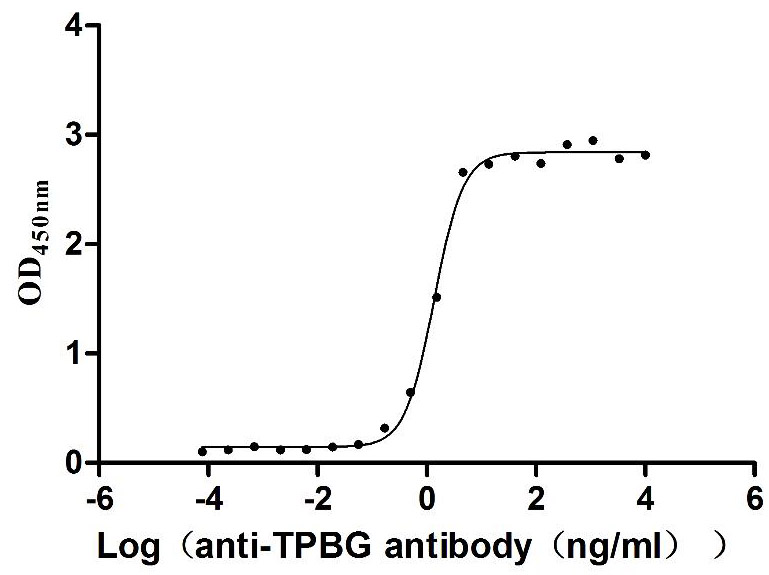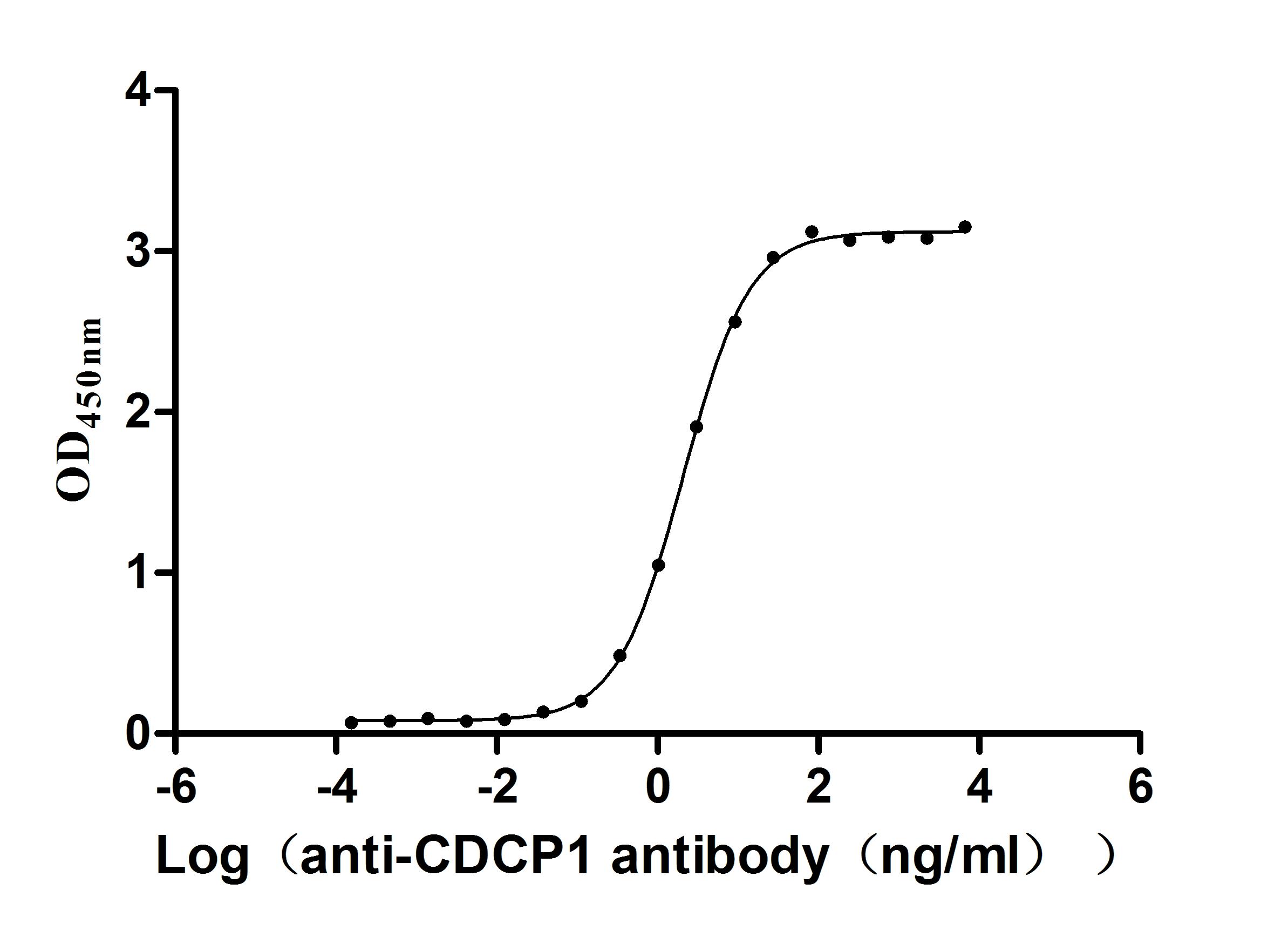Recombinant Human Voltage-dependent N-type calcium channel subunit alpha-1B (CACNA1B), partial
-
貨號:CSB-YP004398HU
-
規格:
-
來源:Yeast
-
其他:
-
貨號:CSB-EP004398HU
-
規格:
-
來源:E.coli
-
其他:
-
貨號:CSB-EP004398HU-B
-
規格:
-
來源:E.coli
-
共軛:Avi-tag Biotinylated
E. coli biotin ligase (BirA) is highly specific in covalently attaching biotin to the 15 amino acid AviTag peptide. This recombinant protein was biotinylated in vivo by AviTag-BirA technology, which method is BriA catalyzes amide linkage between the biotin and the specific lysine of the AviTag.
-
其他:
-
貨號:CSB-BP004398HU
-
規格:
-
來源:Baculovirus
-
其他:
-
貨號:CSB-MP004398HU
-
規格:
-
來源:Mammalian cell
-
其他:
產品詳情
-
純度:>85% (SDS-PAGE)
-
基因名:
-
Uniprot No.:
-
別名:Voltage-dependent N-type calcium channel subunit alpha-1B; Brain calcium channel III; BIII; Calcium channel, L type, alpha-1 polypeptide isoform 5; Voltage-gated calcium channel subunit alpha Cav2.2; CACNA1B CACH5 CACNL1A5
-
種屬:Homo sapiens (Human)
-
蛋白長度:Partial
-
表達區域:245-331
-
氨基酸序列YMGKFHKACFPNSTDAEPVGDFPCGKEAPARLCEGDTECREYWPGPNFGITNFDNILFAILTVFQCITMEGWTDILYNTNDAAGNTW
-
蛋白標簽:Tag?type?will?be?determined?during?the?manufacturing?process.
The tag type will be determined during production process. If you have specified tag type, please tell us and we will develop the specified tag preferentially. -
產品提供形式:Liquid or Lyophilized powder
Note: We will preferentially ship the format that we have in stock, however, if you have any special requirement for the format, please remark your requirement when placing the order, we will prepare according to your demand. -
復溶:We recommend that this vial be briefly centrifuged prior to opening to bring the contents to the bottom. Please reconstitute protein in deionized sterile water to a concentration of 0.1-1.0 mg/mL.We recommend to add 5-50% of glycerol (final concentration) and aliquot for long-term storage at -20℃/-80℃. Our default final concentration of glycerol is 50%. Customers could use it as reference.
-
儲存條件:Store at -20°C/-80°C upon receipt, aliquoting is necessary for mutiple use. Avoid repeated freeze-thaw cycles.
-
保質期:The shelf life is related to many factors, storage state, buffer ingredients, storage temperature and the stability of the protein itself.
Generally, the shelf life of liquid form is 6 months at -20°C/-80°C. The shelf life of lyophilized form is 12 months at -20°C/-80°C. -
貨期:Delivery time may differ from different purchasing way or location, please kindly consult your local distributors for specific delivery time.Note: All of our proteins are default shipped with normal blue ice packs, if you request to ship with dry ice, please communicate with us in advance and extra fees will be charged.
-
注意事項:Repeated freezing and thawing is not recommended. Store working aliquots at 4°C for up to one week.
-
Datasheet :Please contact us to get it.
相關產品
靶點詳情
-
功能:Voltage-sensitive calcium channels (VSCC) mediate the entry of calcium ions into excitable cells and are also involved in a variety of calcium-dependent processes, including muscle contraction, hormone or neurotransmitter release, gene expression, cell motility, cell division and cell death. The isoform alpha-1B gives rise to N-type calcium currents. N-type calcium channels belong to the 'high-voltage activated' (HVA) group and are specifically blocked by omega-conotoxin-GVIA (AC P01522) (AC P01522). They are however insensitive to dihydropyridines (DHP). Calcium channels containing alpha-1B subunit may play a role in directed migration of immature neurons.
-
基因功能參考文獻:
- Cav2.2 alpha1 subunit alone could form a complex with the AMPAR in heterologous cells. The cell-surface AMPAR was increased by co-expression of Cav2.2 alpha1 subunit. PMID: 29448101
- CACNA1B protein expressions in tumorous tissues were correlated with NSCLC patients' clinical characteristics and overall survival. CACNA1B mRNA and protein expression levels were higher in NSCLC tumorous tissues than in nontumorous tissues. PMID: 28127114
- These results do not support a causal association between the CACNA1B c.4166G>A; (p.R1389H) variant and M-D. PMID: 26157024
- AP-1 binding motifs, present only in exon 37a, enhance intracellular trafficking of exon 37a-containing Ca(V)2.2 to the axons and plasma membrane of rat dorsal root ganglia neurons PMID: 26511252
- CACNA1B mutation is linked to unique myoclonus-dystonia syndrome. PMID: 25296916
- The first disease connection for Cav2.2 channels [review] PMID: 26218636
- The interaction between LC1 and the N-type channel (CaV2.2 channel) was demonstrated. PMID: 24566975
- with membrane-localized CaV beta subunits, CaV2.2 channels are subject to Gbetagamma-mediated voltage-dependent inhibition, whereas cytosol-localized beta subunits confer more effective PIP2-mediated voltage-independent regulation PMID: 25225550
- Results show that GABA(B) receptors R1 and R2 must be activated for the modulation of N-type (Ca(v)2.2) calcium channels by analgesic alpha-conotoxins Vc1.1 and RgIA. PMID: 22613715
- new mechanistic perspectives, and reveal unexpected variations in determinants, underlying inhibition of Ca(V)1.2/Ca(V)2.2 channels by distinct RGK GTPases. PMID: 22590648
- Ca(2+) exits the channel through the Cav2.2. PMID: 22491326
- polymorphisms and haplotypes in the human CACNA1B gene show significant differences between cerebral infarction and control patients PMID: 21166801
- Results suggest that a 39 bp DNA element in the N-type voltage-gated calcium channel alpha1B gene might act as repressor in non-neuronal cells through specific interactions with DNA. PMID: 12018859
- molecular dissection of calcium current mechanosensitivity- electrophysiology of N-type calcium channels PMID: 12414690
- the C-terminal region of Ca(v)2.2 does not have a critical role in regulation of the calcium channel PMID: 14602720
- Cav2.2 alpha2delta auxiliary subunit binds to omega-conotoxins PMID: 15166237
- Activation of PKC resulted in its recruitment to and phosphorylation of Ca(V)2.2 channels, but PKC phosphorylation did not dissociate Ca(V)2.2 channel/syntaxin 1A complexes. PMID: 15607937
- The Y388S mutation had no effect on current density and cell surface expression of Ca(V)2.2/alpha2delta-2/beta1b channels expressed in human embryonic kidney tsA-201 cells, when equivalent proportions of cDNA were used. PMID: 16627564
- Our studies of the e37a/e37b splice site reveal a multifunctional domain in the C-terminus of Ca(V)2.2 that regulates the overall activity of N-type calcium channels in nociceptors. PMID: 16857708
- The orientation of the Ca(v)beta subunit relative to the alpha(1)2.2 subunit is critical, and suggests additional points of contact between these subunits are required for Ca(v)beta to regulate channel activity. PMID: 18958281
顯示更多
收起更多
-
相關疾病:Dystonia 23 (DYT23)
-
亞細胞定位:Membrane; Multi-pass membrane protein.
-
蛋白家族:Calcium channel alpha-1 subunit (TC 1.A.1.11) family, CACNA1B subfamily
-
組織特異性:Isoform Alpha-1b-1 and isoform Alpha-1b-2 are expressed in the central nervous system, but not in skeletal muscle or aorta. Expressed in the cerebral white matter, cortex, hippocampus, basal ganglia, and cerebellum.
-
數據庫鏈接:
Most popular with customers
-
Recombinant Human Claudin-9 (CLDN9)-VLPs (Active)
Express system: Mammalian cell
Species: Homo sapiens (Human)
-
Recombinant Human Claudin-6 (CLDN6)-VLPs (Active)
Express system: Mammalian cell
Species: Homo sapiens (Human)
-
Recombinant Macaca fascicularis CD44 antigen (CD44), partial (Active)
Express system: Mammalian cell
Species: Macaca fascicularis (Crab-eating macaque) (Cynomolgus monkey)
-
Recombinant Human IL12B&IL12A Heterodimer Protein (Active)
Express system: Mammalian cell
Species: Homo sapiens (Human)
-
Recombinant Human Trophoblast glycoprotein (TPBG), partial (Active)
Express system: Mammalian cell
Species: Homo sapiens (Human)
-
Recombinant Macaca fascicularis CUB domain containing protein 1 (CDCP1), partial (Active)
Express system: Mammalian cell
Species: Macaca fascicularis (Crab-eating macaque) (Cynomolgus monkey)


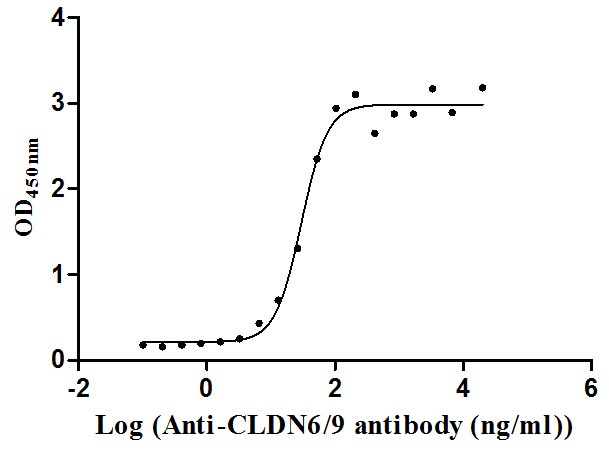
-AC5.jpg)
